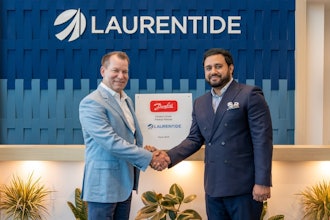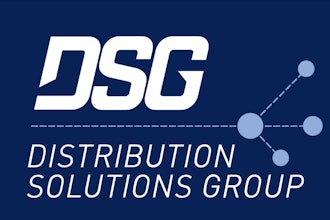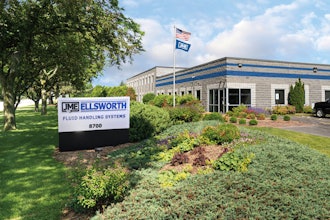The readers of this publication surely know that the world of distribution has been evolving and changing quite dramatically over the past 30 or so years. Historically, price was the main driver for purchasing decisions. This has been true in many industries, including the jansan or professional cleaning industry, which is where our company is a key player.
Starting in the 1990s, purchasers began looking for much more. Competitive pricing just helped a distributor get in the door. Customers wanted to see much more, such as dependable and consistent service, product quality, distributor training programs, etc. Because of this buyer trend, the phrase “add-on” services became commonplace.
But, the big change happened in 2008 due to the economy. While customers still wanted these add-on services, costs became a more critical issue once again. Before a company deals with the thorny issue of letting people go, it will look for ways to reduce operating expenses, and distributor supplies are typically carefully reexamined.
Today, most firms feel more secure and are experiencing steady growth so not only are they looking at the add-on services a distributor can bring to the table, but they are also looking for something more. And, this something more is what a world-class distributor offers.
While many attributes go into the making of a world-class distributor, three characteristics appear to be at the core. These are:
- The ability and willingness to align products and the entire procurement process to meet each client’s specific needs.
- What we can call “continual improvement.” This refers to continually looking at and testing new technologies, processes, and products to meet customers’ needs more effectively. The lack of continual improvement is a key reason why some distributors have disappeared over the past 30 years; their business models simply did not evolve to meet the needs of a new generation of customers.
- The desire to become a partner, rather than just a vendor.
We will discuss each one of these characteristics in more detail below.
Product Rationalization
Having the ability to align products and procurement processes to meet the customers’ needs falls under the umbrella of what is often termed “product rationalization.” This term can apply to manufacturers and distributors, as well as end-customers. An example of product rationalization, or the lack thereof, is when a customer keeps adding products to procurement without using the same or similar products that have already been purchased.
Possibly an example will help explain the problems this can cause. A large contract cleaning company with multiple offices serving a variety of states realized there was little rhyme or rhythm to its procurement — the result of no centralized ordering system. A multitude of unnecessary SKUs were in the system, and individual divisions often ordered products, not knowing that another unit had stopped purchasing that same product due to cost, poor performance, green or sustainability issues, etc. This is an example of one hand not knowing what the other hand is doing.
A world-class distributor is aware of the pitfalls associated with product rationalization and how big businesses especially in multiple locations can fall into this trap. In this case, a world-class distributor would do the following:
- Help the client create a centralized purchasing system
- Perform product audits to determine which products are proving most efficient and cost effective
- Suggest alternatives that may have additional benefits
- Make sure the entire procurement process meets the objectives and goals of the customer; for instance, are green or sustainability strategies a key concern? Enhancing worker productivity?
Continual Improvement
In the late 1990s, a designer of e-commerce websites met with a New Jersey distributor. The meeting was to encourage the distributor to jump on the e-commerce bandwagon early — as it was at that time — and make e-commerce sales a future and potentially significant revenue source.
The distributor told the designer he was not interested. He said that it was just in the past couple of years his staff learned how to turn fax machines into ordering devices for their customers. In other words, he saw no value in developing what admittedly would be a costly e-commerce website. And, considering this was early in the development of the internet, we can understand his reasoning.
However, this is also an example of a distributor that, at least at this point, is stuck in an older distribution model. Most likely if his son or daughter is now running the company, he or she would not hesitate to consider e-commerce and other technologies.
But, the bigger picture is that world-class distributors are always looking at technologies such as online dashboard systems that can help them operate their businesses more efficiently and, even more important, help their customers manage theirs more effectively as well. Technologies that, for instance, can analyze current customer procurement practices and suggest alternatives would contribute to making a distributor world-class.
Partnering
Executives at a large corporate campus had a problem to solve. They realized they were spending an enormous amount on trash can liners. With 2,000 employees, we can assume there were likely around 2,000 trash cans on the campus. Also, this organization had become very sustainably focused. Because most trash liners in use today are not made from recycled materials and take years to decompose, purchasing and disposing of thousands of trash liners every year was a practice the corporation no longer wanted to continue.
Putting the needs and concerns of the customer first, this organization’s world-class distributor helped develop a program to minimize and soon eliminate the use of trash can plastic liners throughout the campus. The distributor even worked with the cleaning contractor to make sure this did not add any additional time for the custodial crew, which might offset any savings realized by not purchasing the liners.
While the distributor lost the revenue generated by selling trash liners to this client, it reaped the reward of moving from a vendor to a partner with this company, and as we know, partners likely tend to stay around a lot longer than suppliers.
Michael Wilson is vice president of Marketing for AFFLINK, a global provider of supply chain optimization and developers of ELEVATE, providing clients with innovative process and procurement solutions for driving efficiencies in today's leading businesses. He can be reached thru his company website at www.AFFLINK.com






















